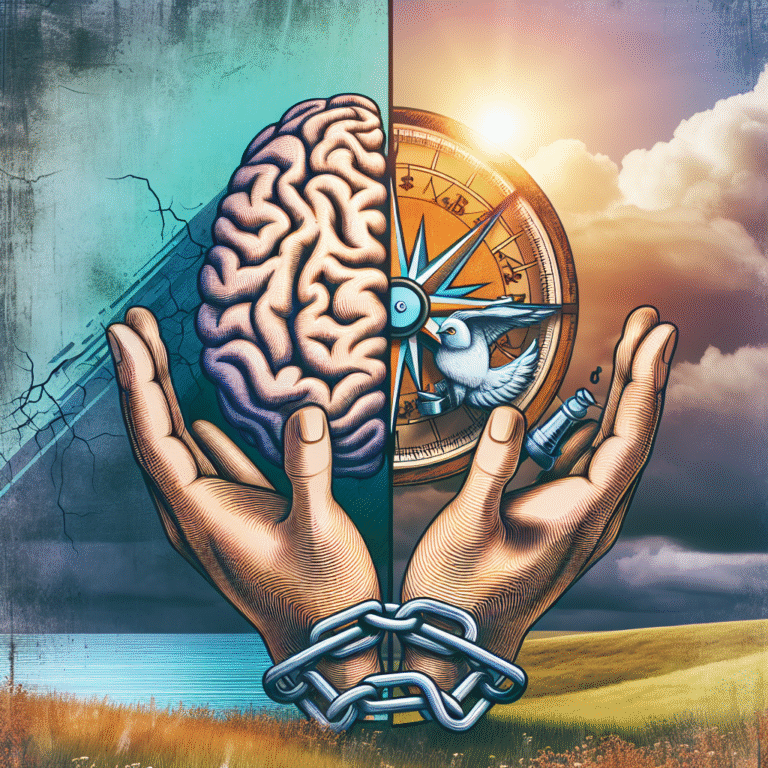
Introduction
In an age where mental health is increasingly recognized as a cornerstone of overall well-being, understanding trauma becomes essential. Trauma can manifest in various ways—often beyond what we can see or simply diagnose at first glance. The goal of this article is to explore "Beyond the Basics: Advanced Methods in Trauma Assessment," shedding light on innovative and advanced techniques that ensure a deeper understanding of individual trauma experiences. As mental health professionals strive to fine-tune their assessment strategies, it’s crucial to explore these advanced methods that can transform the clinical landscape.
Understanding Trauma: The Foundation
Definitions and Types of Trauma
To truly grasp the significance of advanced assessment methods, we first need to understand trauma itself. Trauma can be classified into several categories:
- Acute Trauma: Resulting from a single event (e.g., accidents, natural disasters).
- Chronic Trauma: Ongoing exposure to harmful situations (e.g., domestic violence, abuse).
- Complex Trauma: Multiple traumatic events, often occurring within a specific context, like childhood abuse.
Understanding these distinctions lays the groundwork for effective assessment strategies.
The Importance of Advanced Trauma Assessment
While traditional methods such as interviews or self-report questionnaires serve their purpose, they may not capture the entirety of an individual’s experience. This calls for advanced approaches that delve deeper into the psychological, physical, and emotional facets of trauma. Equipped with these methods, mental health professionals can tailor their interventions to foster healing more effectively.
Advanced Methods: A Closer Look
1. Neurobiological Assessments
Recent advancements in neuroscience have revealed how trauma affects the brain’s structure and functioning. Neurobiological assessments utilize techniques such as brain imaging and biofeedback to evaluate traumatic impacts on neural processes.
Case Study: Maria’s Healing Journey
Maria, a 28-year-old woman who experienced childhood abuse, underwent a comprehensive neurobiological assessment that revealed changes in her amygdala and prefrontal cortex. By understanding these changes, her therapist implemented a personalized treatment plan that included cognitive-behavioral therapy (CBT) and mindfulness practices. The result? Significant reduction in her anxiety symptoms and improved emotional regulation.
Analysis
Maria’s case underscores the power of integrating neurobiological assessments in trauma evaluation. With a more profound understanding of how her brain responded to trauma, her treatment could be uniquely tailored for efficacy.
2. Trauma-Informed Assessment Tools
Beyond standard questionnaires lies an array of trauma-informed assessment tools designed to capture nuanced responses to trauma. These assessors take into account the individual’s lived experience and their unique coping strategies.
Table 1: Common Trauma-Informed Tools
| Tool Name | Description | Key Focus |
|---|---|---|
| ACE Questionnaire | Measures Adverse Childhood Experiences | Childhood Trauma |
| TSI | Trauma Symptom Inventory: focuses on trauma symptoms | Psychological Effects |
| PCL-5 | PTSD Checklist for DSM-5: identifies PTSD symptoms | PTSD Evaluation |
Utilizing these tools can help practitioners determine appropriate interventions based on the individual’s trauma history, symptoms, and resilience factors.
3. Attachment-Based Assessments
Attachment theory, pioneered by John Bowlby, plays a critical role in understanding how early relationships shape our responses to trauma. Attachment-based assessments delve deep into the individual’s attachment style—secure, anxious, or avoidant—and their impacts on trauma responses.
Case Study: Tom’s Attachment Patterns
Tom, a 35-year-old man with complex trauma history, was evaluated using attachment-based assessments. His fearful avoidant attachment style was revealed to be a significant barrier to his healing. Incorporating attachment theory into his treatment allowed Tom to create healthier relationships and build trust, leading to substantial emotional healing.
Analysis
Tom’s case highlights the importance of understanding attachment styles in trauma assessment. With this knowledge, practitioners can focus on bolstering interpersonal relationships, which is crucial for recovery.
4. Cultural Contextual Assessments
Trauma is experienced through a cultural lens, making it vital to include cultural considerations in assessments. Understanding cultural norms, values, and beliefs can provide insights into how individuals process and cope with trauma.
Table 2: Cultural Considerations in Trauma Assessment
| Cultural Aspect | Impact on Trauma Perception |
|---|---|
| Family Dynamics | Understanding how different cultures view familial roles can inform support strategies. |
| Communication | Cultural variances in communication styles may affect how individuals express trauma. |
| Coping Mechanisms | Different cultural backgrounds may influence the coping strategies individuals employ. |
Integrating cultural contextual assessments ensures that trauma evaluation is not only person-centered but also culturally sensitive.
5. Holistic Assessments
Holistic methods involve evaluating the individual’s entire self—mind, body, and spirit. This multifaceted approach encompasses physical health evaluations, emotional well-being checks, and even spiritual assessments.
Case Study: Sarah’s Holistic Approach
Sarah, a survivor of domestic abuse, engaged in holistic assessments that evaluated her physical health (e.g., nutrition and exercise) alongside her emotional and spiritual needs. This inclusive approach led to her establishing a robust support system and regimen, ultimately aiding her recovery.
Analysis
Sarah’s healing journey exemplifies the necessity of holistic assessments in trauma care. By addressing her physical, emotional, and spiritual well-being together, she experienced accelerated healing.
Implementing Advanced Methods in Practice
Training and Education
For practitioners to utilize advanced methods effectively, ongoing training and education are essential. Workshops, seminars, and certifications in trauma assessment can equip mental health professionals with the latest insights and techniques.
Collaborative Care Approaches
Emphasizing a multidisciplinary approach fosters more robust trauma assessments. Collaborating with medical professionals, social workers, and cultural liaisons expands the perspective of trauma evaluation, ensuring comprehensive care.
Emphasizing Continuous Feedback
Incorporating continuous feedback from clients helps practitioners refine their assessment strategies. Utilizing tools like client feedback forms and outcome measures allows professionals to adapt their approaches based on client needs continually.
Conclusion
In summary, our journey “Beyond the Basics: Advanced Methods in Trauma Assessment” has uncovered transformative approaches to understanding trauma. By integrating neurobiological, trauma-informed, attachment-based, cultural, and holistic assessments, we can reshape the narrative of trauma recovery.
As mental health practitioners, embracing these advanced methods isn’t merely an option—it’s an ethical imperative to ensure that every individual receives tailored care that acknowledges their multifaceted trauma experiences. Let this be a call to action for all professionals: advance your skills, deepen your understanding, and enhance the lives of those seeking healing.
FAQs
1. What are the main types of trauma?
Trauma can be categorized into acute, chronic, and complex trauma, each respectively arising from single events, ongoing experiences, and multiple, layered events.
2. How do neurobiological assessments work?
Neurobiological assessments utilize brain imaging and biofeedback to analyze how trauma has altered brain function and structure, yielding insights for tailored therapeutic approaches.
3. What is a trauma-informed approach?
A trauma-informed approach prioritizes understanding the effects of trauma on individuals, ensuring that assessments and interventions acknowledge and accommodate these impacts.
4. Why is cultural context important in trauma assessment?
Cultural context informs how trauma is perceived and processed. Recognizing cultural influences ensures that assessments are sensitive and relevant to the individual’s background.
5. How can holistic assessments benefit trauma survivors?
Holistic assessments consider the overall well-being of individuals, recognizing the interplay of physical, emotional, and spiritual health, which is critical in fostering comprehensive recovery.
Through this exploration of advanced methods in trauma assessment, we invite you to further your insights and skills in this essential field—because healing is not just possible; it’s achievable when we embrace all dimensions of trauma.













